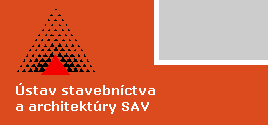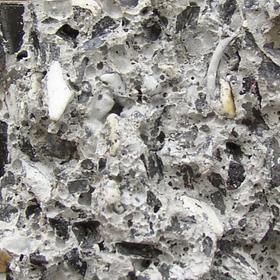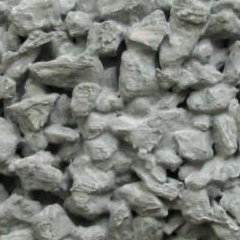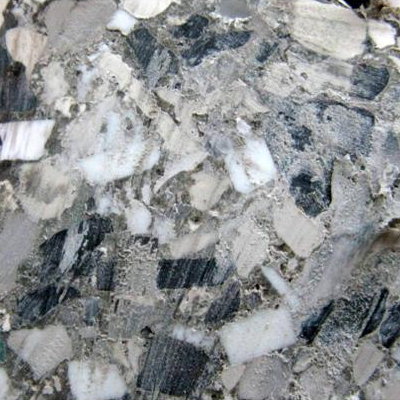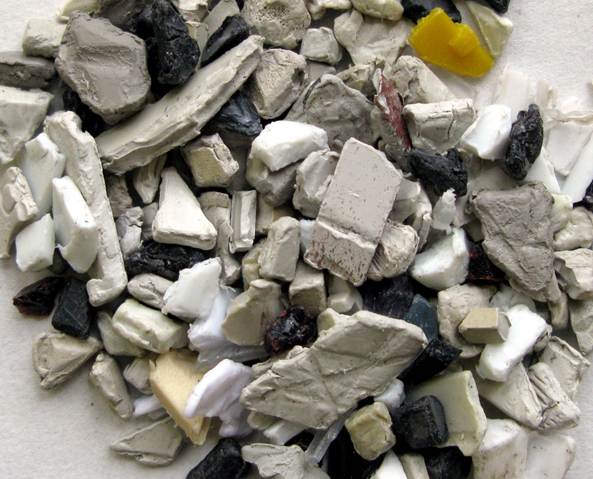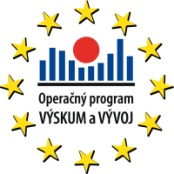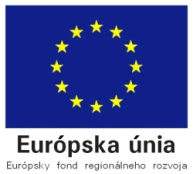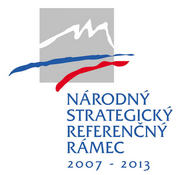Publikované práce (abstrakty):
- Časopisy
- Zborníky
1. V. Živica, Ľ. Bágeľ, B. Vasilkovová. BOREHOLE CEMENTS AND COMPOSITES FOR THE EXPLOITATION OF GEOTHERMAL ENERGY, Building Research Journal, vol. 57, 2009, pp. 223-232
The continual increasing of energy consumption makes for searching and using alternative kinds of energy. Geothermal energy has a great potential because of its availability, independence of seasons and minimal environmental impact. The heat obtained from 7 to 10 km deep boreholes could be interesting source of energy used for making electricity. The deep geothermy needs the effective drilling technologies and their development is significant precondition of exploitation of geothermal heat. The application of cement composite materials is an important part of drilling construction. During the apllication the fresh composites mixtures are exihibited to the increase of the ambient temperature and pressure – from atmospheric to the level given by the bore deep. The similar conditions act on the material of the cement composites during the exploitation of the drilling construction. More over the action of high aggressive environment is usually actual. All these conditions represents high demands not only on the properties of cement composites mixtures and their constituents, but even on the application technology. Therefore, a design of the correct composition need to have the fundamental theoretical and research knowledge deal with the relations between the properties of the fresh and hardened composites and the conditions in the borehole. An adequate proposal of the cement composites composition is the goal of project supported by European Regional Development Fund (ERDF).
2. V. Živica, M.T.Palou,Ľ. Bágeľ, B.Vasilkovova. CEMENTS AND GEOTHERMAL DEEP BOREHOLE ENVIRONMENT. Building Research Journal, vol. 58, 2010, No.1-2, pp. 95-116
High temperatures up to 400°C and pressures up to 150 MPa can be reached in deep boreholes. The borehole conditions under which cement and cement composites mixtures are used differ from commonly used condition for cement materials. Moreover the chemistry of geothermal reservoir fluids to which cement is exposed varies from essentially fresh waters. They contain 10 times larger amount of salinities in comparison to the amount in the sea water. Non condensable gases, notably H2S and C02, are also frequently present. Cements and composite mixtures should comply with these conditions. Therefore special cements with superior engineering properties, hardening characteristics under high-temperature and high-pressure conditions are taken into consideration.
3. V. Živica, Ľ. Bágeľ, M. Kuliffayová. HIGH STRENGTH ALKALI-ACTIVATED SLAG PASTE. Building Research Journal ,v tlači, 25. 3. 2011.
In the paper the results of the study on the co-effect of very low liquid/solid (l/s) ratio and the pressure compaction at alkali activated slag paste are presented. A significant compressive strength increase effect has been found reaching 215 % or 150 MPa respectively. It has been found that this positive effect was based on the significant modification of the pore structure. A consequence was the dense pore structure with the higher degree of its homogeneity based on the formation of the finer hydration products. The studied approach seems to be very prospective way for preparation of slag composite materials as an alternative for the replacement, of ceramic, metal or organic materials in some areas.
4. V. Živica, M. T. Palou. PROPERTIES CHARACTERIZATION OF METAHALLOYSITE GEOPOLYMER PASTE PREPARED UNDER THE USE OF VERY LOW LIQUID/SOLID RATIO AND HIGH-PRESSURE COMPACTION. Construction and Building Materials,v tlači, Manuscript Number: CONBUILDMAT-D-11-00721, 30. 5. 2011.
The paper presents the results of the study on the effects of the combination of of the low activator solution to metahalloysite ratio (l/s) and high pressure compaction of the fresh paste on the properties of the hardened metahalloysite geopolymer paste.As the result the high dense homogeneous nano- or near-nano-pore structure with high strength and very low water permeability has been found.Mechanical densifying of the starting mixture and the decrease of its porosity due to the pressure compaction and well known positive effect of the low w/c ratio,at the given case l/s ratio,were found as the responsibile factors.
5. V. Živica, M. T. Palou, B. Vasilkovova. SLAG CEMENT FOR CEMENTING IN ACIDIC ENVIRONMENT OF GEOTHERMAL DEEP WELLS. Part I: Acidic attack - principle, factors and protective measures. Geothermics, v tlači, manuscript number geot-d-11-00036, 26. 6. 2011.
Cementing material in geothermal boreholes is governed by the chemistry and interactions of the solid (i.e., cement, aggregate and host rock) and fluid components, (i.e., cement solutions, formation fluids and drilling fluid). Three contributory factors (physical, chemical and biological) interact to produce the overall borehole environment, which may affect effect the integrity of cementing material. These factors will vary according to depth and lithology. As it is known, the waters in geothermal deep wells are usually very aggressive to the applied cementing materials. Very often acidic aggressivity of geothermal waters used to be a dominating type. Therefore, in the interest of the ensuring of life service of the wells used cementing material should be high acidic resistant. But it is a crucial problem due to the fact that practically all-protective measurements like e.g. the choice of the cement, increased density of material and others are weak and insufficient.
The subjects of the paper are the sources of acidic media, principle of acidic attack, and factors of the environment acidic aggressivity and acidic resistance of the cement material. It is shown that the general low resistance of cement-based materials is caused by their universal alkalinity making them a willing partner in the reaction with acidic species.
6. V. Živica, M. T.Palou. SLAG CEMENT FOR CEMENTING IN ACID ENVIRONMEMT OF GEOTHERMAL DEEP WELLS. Part II. ACID RESISTANT SLAG CEMENT. Geothermics, v tlači, manuscript number geot-d-11-00051, 4. 8. 2011.
The durability of cementing materials in geothermal boreholes is governed by the chemistry and interactions of the solid (i.e., cement, aggregate and host rock) and fluid components, (i.e., cement solutions, formation fluids and drilling fluid). Physical, chemical and biological factors interact to produce the overall borehole environment, which may affect the integrity of cementing materials. As it is well known, the waters in geothermal deep wells are usually very aggressive to the cementing materials. Very often, acid aggressivity is a dominating type. Therefore, cementing materials should be high acidic resistant. But it is a crucial problem when all protective measurements like e.g. the choice of the cement, increased density of material and others are weak and insufficient. The cause is in general matrix alkalinity of the cementing materials. The presented work reports the results of investigation of the acidic resistance of the alkali activated slag cement on the dependence of two types of the activator used – sodium hydroxide and silica fume activator.
1. Ľ. Bágeľ, B. Mlynková, V. Živica, M. Križma. Nanobetón – materiály a technológie v príkladoch. Betonárske dni 2010, Zborník prednášok, s. 207-211
Betón považovaný za najvšestrannejší stavebný materiál ešte nevyčerpal všetky svoje technologické a aplikačné možnosti. Obnova a expanzia infraštruktúry si vyžaduje betóny so špecifickými vlastnosťami a pri plnení týchto požiadaviek môžu pomôcť nanomodifikácie. Betón bol až donedávna značne pasívny, pokiaľ ide o dobiehanie nástupu revolúcie v nanotechnológiách, táto situácia sa však mení. Príspevok podáva prehľad o súčasnom stave nanotechnológií v oblasti cementu a betónu, doplnený názornými príkladmi.
2. V. Živica, P. Matiašovský, S. Balkovic, M. Drábik. Budúcnosť cementu ako základnej zložky perspektívnych betónových konštrukcií. CEMENT 2010,Medzinárodná konferencia,Inovačné trendy vo výrobe stavebných látok,11. – 13.10.2010,Stará Lesná, Vysoké Tatry Kongresové centrum SAV ACADEMIA,Stará Lesná, Zborník prednášok: nečíslované.
Betón je človekom najviac používaný konštrukčný materiál.Táto jeho pozícia je daná jeho vynikajúcimi technickými vlastnosťami a pomerne jednoduchou technológiou výroby. Preto sa nerysuje v budúcnosti ani náznak existencie iného konkurencie schopného konštrukčného materiálu, ktorý by perspektívny betón nahradil. Rovnakú perspektívu vykazuje aj nezastupiteľná zložka betónov –cement.Temer trvalo stúpajúce nároky na technické vlastnosti betónových konštrukcií vyžadujú aj zlepšovanie vlastností cementov a vývoj a používanie nových druhov cementov. Súčasne však vyrábaných technológiami šetriacimi životné prostredie.
3. M. T. Palou, V. Živica, Ľ. Bágeľ. Korózia betónu. V. Odborný seminár KVALITA CEMENTU, VUSTAH, 24.-25.března 2011,Valtice, s.61-72
Jednu z príčn poškodenia betónových konštrukcií predstavuje chemický atak ich materiálu,známy ako ich korózia.V príspevku sa uvádzajú jej činitele ako aj možnosti zvýšenia odolnosti betónových konštrukcií proti korózii.
4. V.Živica,Ľ.Bágeľ,M.T.Palou. Korózia oceľovej výstuže. V. Odborný seminár KVALITA CEMENTU, VUSTAH, 24.-25. března 2011,Valtice, s. 73-80
Pod koróziou oceľovej výstuže železobetónových konštrukcií sa označuje proces porušovania povrchu výstuže vplyvom okolitého prostredia .Jedná sa o spontánny proces na fázovom rozhraní oceľ- elekrolyt tvorený pórovou kvapalinou v betóne,sprevádzaný elektrickými javmi.Podmienkou elektrochemickej korózie výstuže je existencia miest na povrchu ocele s rozdielným elektrickým potenciálom.
5. M. T. Palou, V. Živica, Ľ. Bágeľ. The influence of particle size of sulphoaluminate belite cement phases upon their mixture hydration. 4th International Conference NON-TRADITIONAL CEMENT&CONCRETE, Proccedings Bilek and Keršner, eds. Brno 2011,ISBN 978-80-214-4301-3, pp. 206-217
A model of sulphoaluminate belite cements (shorthand SAB) has been set comprising three main minerals (C2S, C4A3S and CS) with different particle size. The clinker minerals were synthesized, ground and classified in to three particle (fine, middle and coarse) sizes. Then 27 cements with the same mineralogical composition, but with different particle size distribution were set. The kinetics and mechanism of hydration as well as the microstructure development were investigated by using conduction calorimeter, thermal analysis and scanning electronic microscope (SEM). It was found that the fine particle of C2S influences the mechanism of ettringite formation in given SAB models. Indeed, fine particles of C2S dissolve rapidly at the early period of hydration realizing thus calcium ions in to solution. The huge presence of calcium ions enhances pH of environment and then the mechanism of ettringite formation changes. Ettringite was formed topochemically, while in the presence of coarse particle of C2S it was precipitated via solution mechanism. The present work reports the results of hydration heat evolution and mechanical compressive strength of the first 9 samples.
6. Ľ. Bágeľ, M. T. Palou, V. Živica. Development of fibre-reinforced geothermal composites for application in pretentious hydrothermal conditions. 5th Meeting on Chemistry and Life, FACULTY OF CHEMISTRY BRNO UNIVERSITY OF TECHNOLOGY, 13-16.9.2011 BRNO, V TLAČI
Fiber-reinforced cement composites were developed for potential geothermal well cementing applications due to their high performance to wisthand aggressive hydrothermal conditions where temperatures may exceed 400°C. Nowadays, growing interest is paid to the development of geothermal energy as alternative to energy based on fuel due to its advantage in the savings of natural resources, energy and CO2 emission. During the exploitation of geothermal energy, steel casings are protected from severe environment by cementitious sealant that helps to maintain its structural integrity. Though the minimum compressive strength of cement required for geothermal applications, according to API (American Petroleum Institute) Task Group is 6,9 MPa, this criterion cannot however, meet all scenarios, such as pressure, temperatures, carbonation etc. that may exist in geothermal wells. Fiber-reinforced cement systems were investigated in autoclave in order to identify composites offering the best improvement, not only, in cement compressive strength, but also tensile strength, porosity, microstructure and durability.
For this propose, basalt fibers were used to reinforce the cement matrix composed of Portland cement, calcium aluminate cement, phosphate reactant, retarder, stabilizer and superplastifier.
Four different mixtures were investigated and their strength development during autoclaving at pressures of 4, 12 and 20 bars were studied. The time of hydrothermal treatment – 2, 24 and 72 hours were used.
On test specimens compressive and tensile strengths were determined, SEM and mercury porosimetry were used to characterize the pore structure of cured samples. X-Ray diffraction and thermal analysis method were also used in this investigation to identify hydrated products and to characterize their thermal stability.
7. M. T. Palou, V. Živica, B. Vasilkovová. Effects and possibility of very low w/c ratios in concrete technology and related materials. Konferencia so zahraničnou účasťou BETÓN 2011,Štrbské Pleso, 5.-7.10.2011,v tlači.
The subject of paper are the results of the study on the hardened cement paste prepared with very low w/c ratios from 0.115 till 0.075 and pressure compaction till 300 MPa. Well known and often reported the significant compressive strength increase and the total porosity and pore median decrease was found. But other significant effects have been found: an increase of the CaO:SiO2 and the decrease of H2O:SiO2 ratios,their consequence were the particles morphology changes shown as a gradual loose of the crystal character under the formation of the finer spherical and cylindrical particles of the hydration products showing the increase in the biding capacity and the increase of the homogeneity of the pore structure.
8. V. Živica, M. T. Palou, Ľ.Bágeľ. Požiadavky na vlastnosti cementových materiálov pre extrémne náročné prostre prostredie v hlbokých geotermálnych vrtoch. Konferencia so zahraničnou účasťou BETÓN 2011, Štrbské Pleso, 5.-7.10.2011, v tlači.
Geotermálna energia predstavuje významný zdroj tepla na výrobu elektrickej energie ako náhrada konvenčných palív.Využitie tohoto zdroja na výrobu elektrickej energie umožňujú vrty s hĺbkou 7 až 10 km a konštrukcie geotermálnych studní.Významnú zložku konštrukcie predstavujú cementové materiály vypĺňajúce priestor medzi horninovou stenou vrtu a vloženým oceľovým potrubím, resp.samostatne tvoriace povlak steny.Zvyšovanie teploty a tlaku z atmosférickej úrovne na úroveň zodpovedajúcu hĺbke vrtu, chemická agresivita a biologická aktivita geotermálnych vôd spôsobujú významne sa odlišujúce podmienky od bežných, pre ktoré má stavebná prax k dispozícii rozsiahle poznatky a skúsenosti. Navrhnutie zloženia vyhovujúceho materiálu predstavuje náročnú úlohu.
